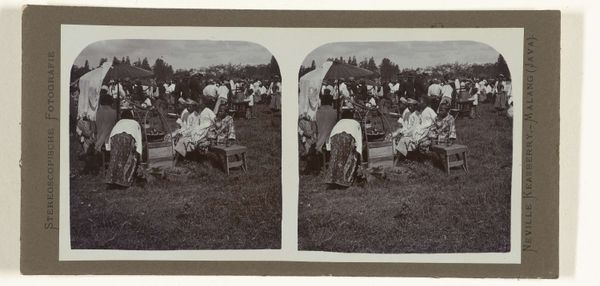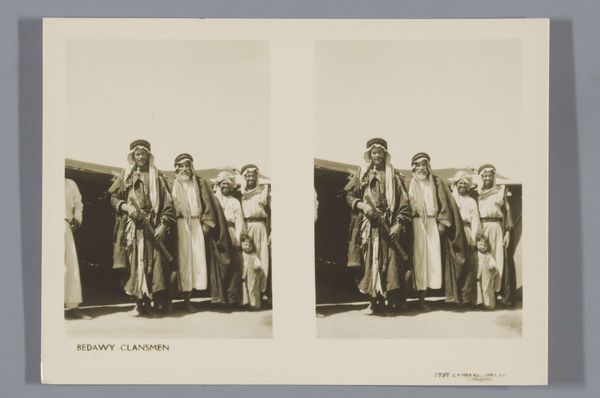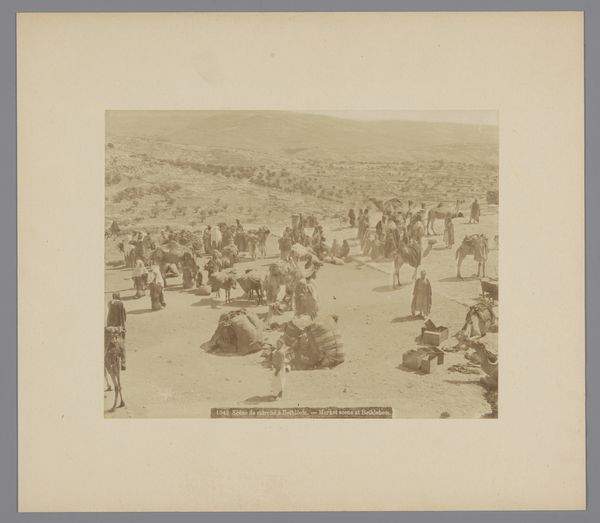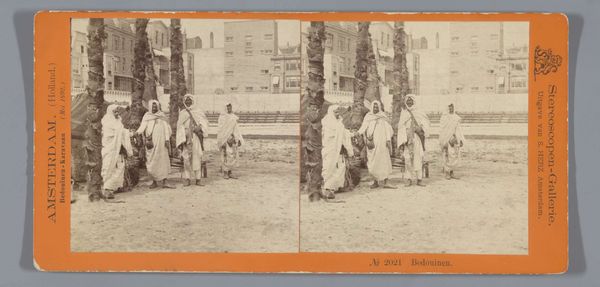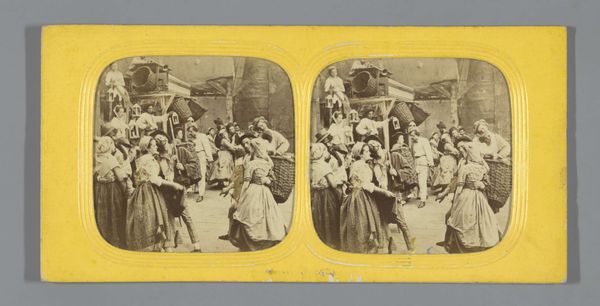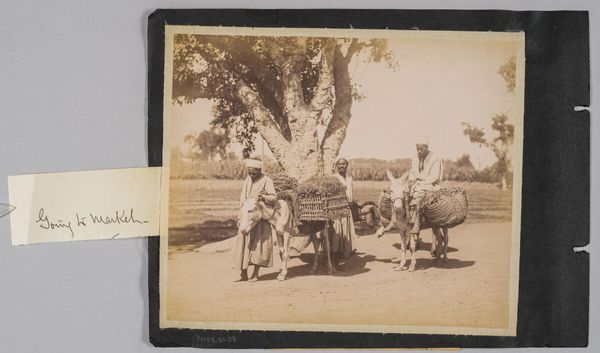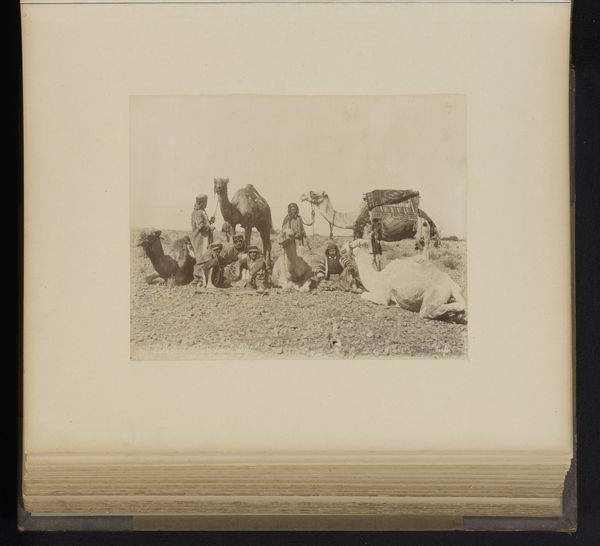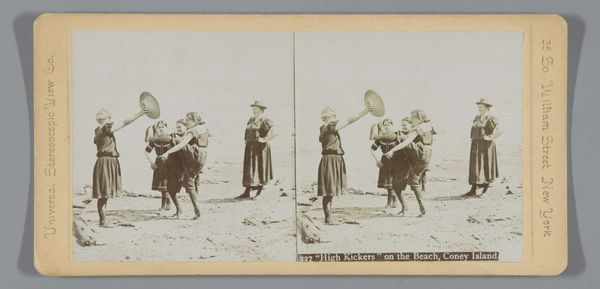
photography, gelatin-silver-print
#
portrait
#
landscape
#
photography
#
orientalism
#
gelatin-silver-print
Dimensions: height 82 mm, width 114 mm
Copyright: Rijks Museum: Open Domain
Editor: We’re looking at Richard St. Barbe Baker's gelatin-silver print from 1929, titled "Bedoeïenenfamilie bij hun tent, waarschijnlijk nabij Tell Fara," which translates to "Bedouin Family by their tent, probably near Tell Fara". It’s a photo of a family, presumably Bedouin, posed in front of their tent. There's a stillness, a posed quality to the whole scene that gives it a rather formal feel, despite the casual setting. What strikes you about this photograph? Curator: Ah, yes. This image sings of a particular era's fascination with the ‘Orient,’ doesn’t it? Baker, a noted conservationist, captures them not as individuals, but as types. It’s beautifully composed, almost like a stage tableau, isn't it? I can't help but wonder about the context, about Baker's intentions. Was it admiration, or something else driving him? What do you notice about the light, the desert light? Editor: The light seems almost harsh, unforgiving, yet it gives such clarity to the details. I suppose it accentuates the otherness – to Western eyes, anyway. So do you see this as a potentially problematic representation, then? Curator: Problematic is perhaps too strong. It’s a document of a specific time, shaped by a certain perspective, imbued with both curiosity and the colonial gaze. We bring our awareness of that to this viewing. The beauty, the simplicity, can still resonate, don't you think? Even when shadowed by questions of representation, one can contemplate a profound way of living that stands in sharp contrast to today. How remarkable is it, that we’re speaking of it nearly a century after this image was imprinted? Editor: That’s a great point! I initially saw just a static picture, but now I'm seeing layers of history and complex perspectives. Thanks for highlighting those deeper nuances!
Comments
No comments
Be the first to comment and join the conversation on the ultimate creative platform.
